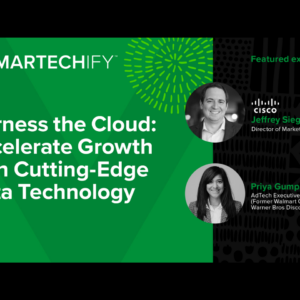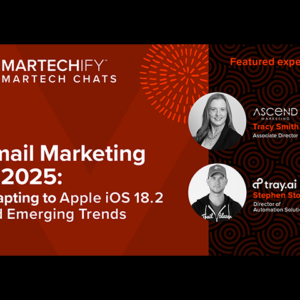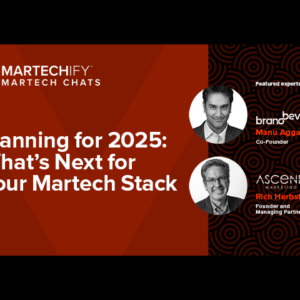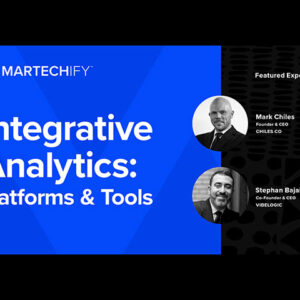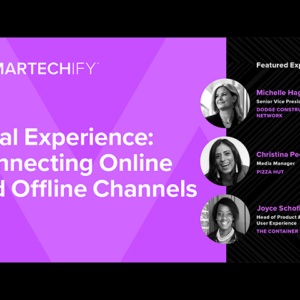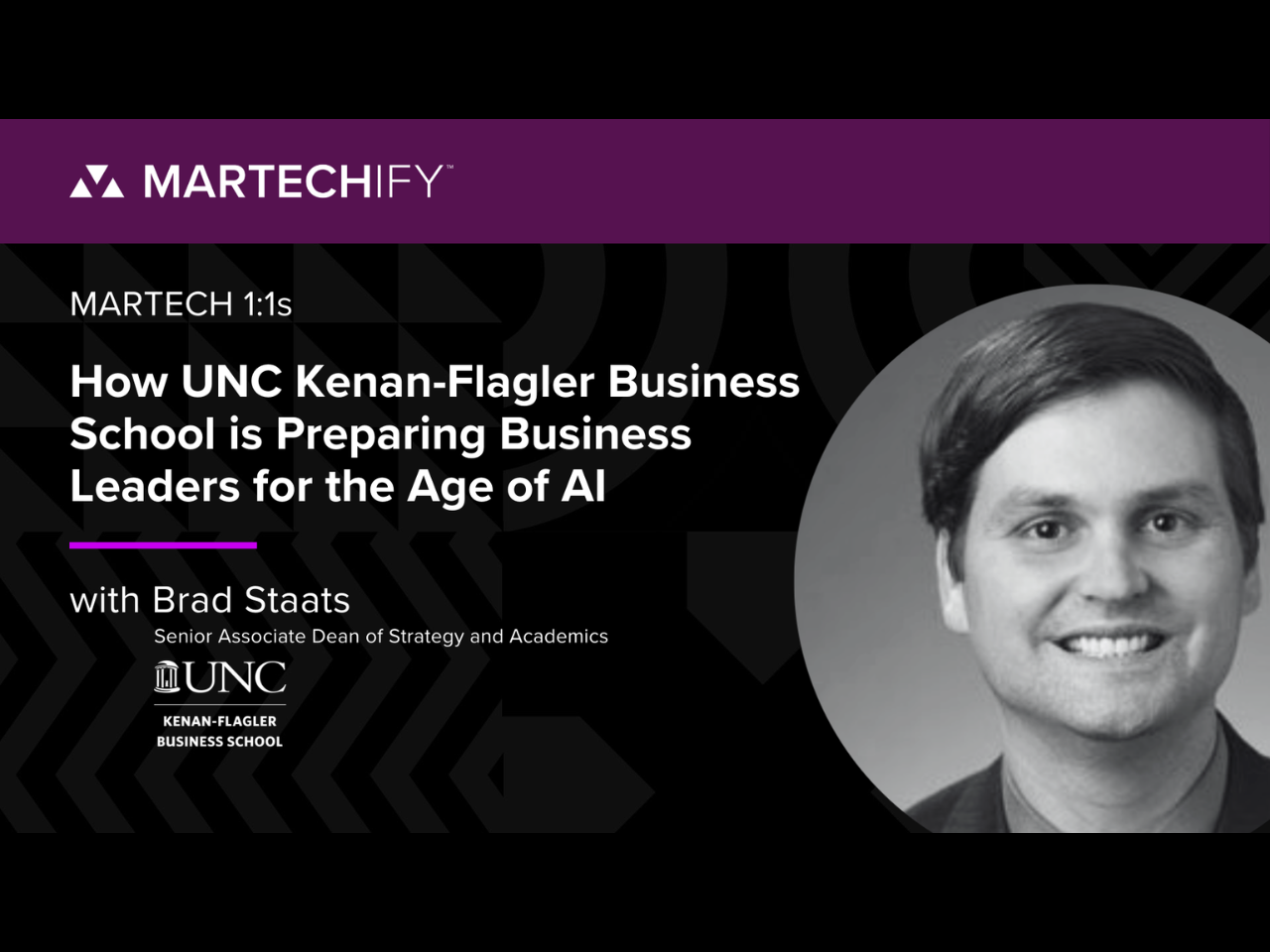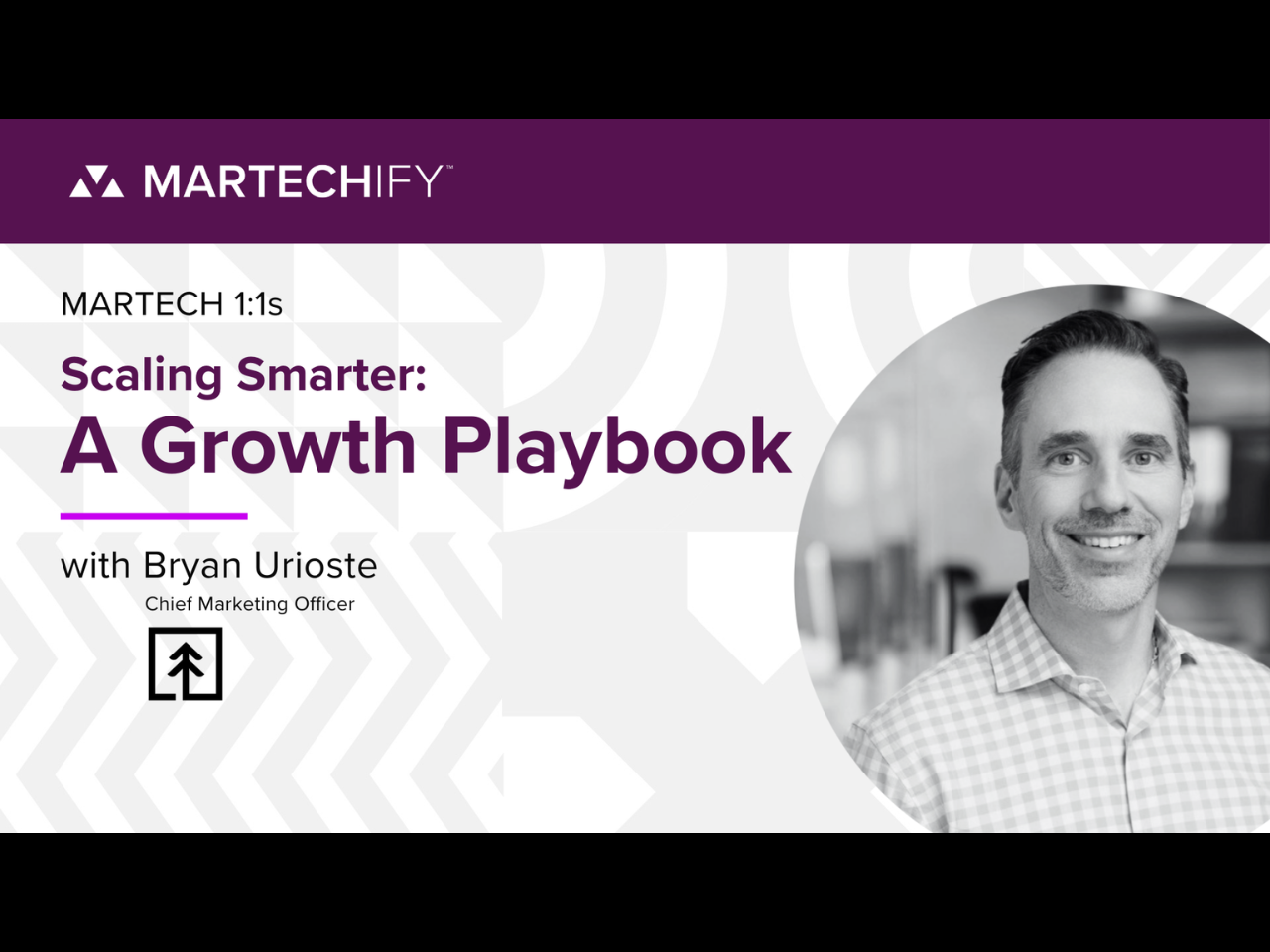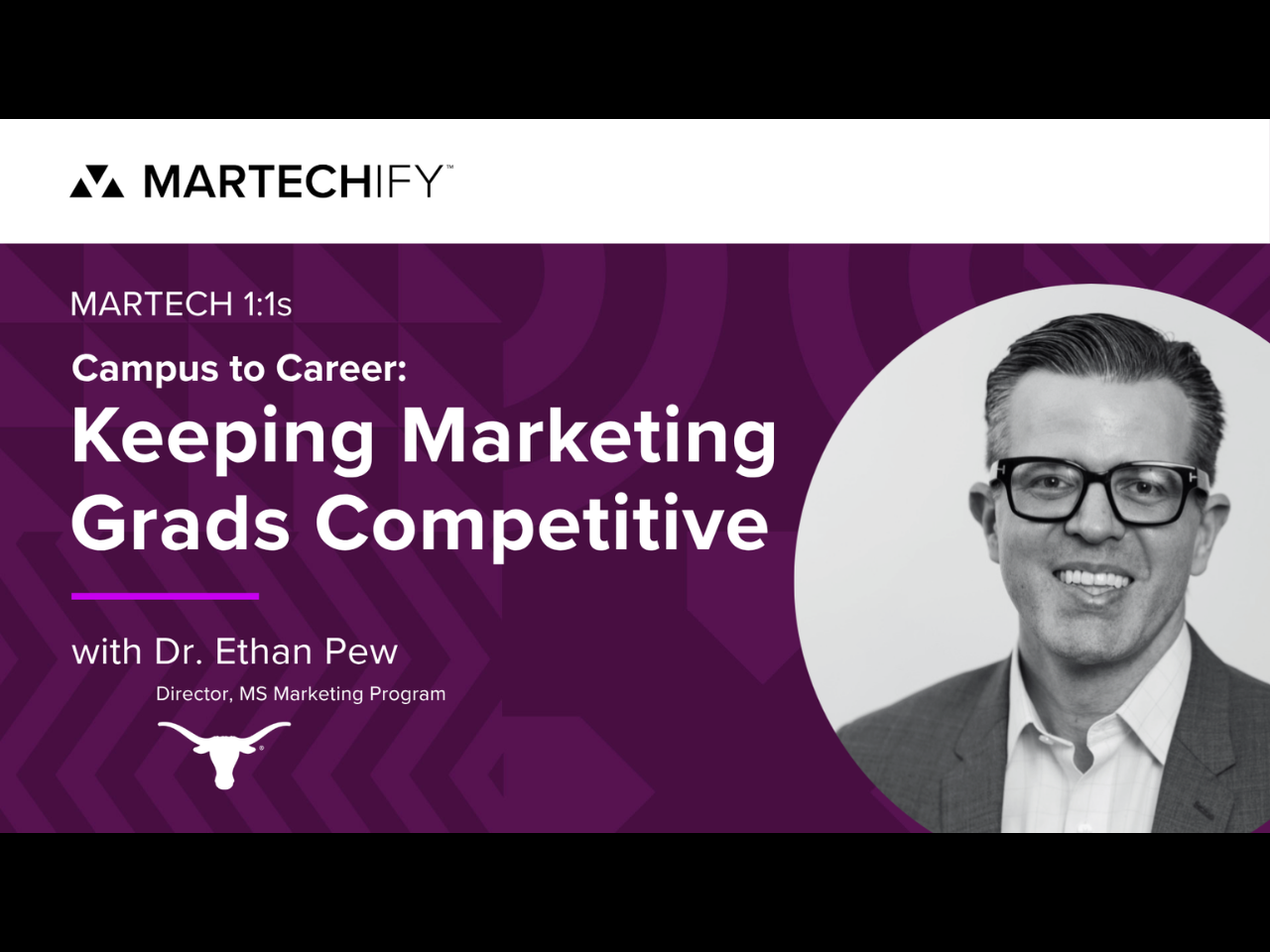Maximizing Marketing Impact through High-Touch Engagement and Strategic Martech
- Dave Chmielewski, Senior Manager, Growth Marketing at BigPanda
- Account Based Marketing (ABM), Campaign Optimization, Content Strategy and Marketing, Customer Experience (CX), Lead Gen / Lead Mgmt, Sales and Marketing Orchestration
Most marketers today find themselves caught in a false choice—should they invest in digital personalization technology or focus on traditional relationship-building?
Dave Chmielewski, Senior Manager of Growth Marketing at BigPanda, rejects this either/or thinking. By combining intimate executive dinners that generated “30 to 50X in pipeline” with strategic martech tools and data-driven educational content, David is proving that the most effective marketing doesn’t choose between human connection and technology—it leverages both.
We interviewed Dave and we’re honored to bring you his thoughts on blending high-touch marketing with strategic technology use. As the Senior Manager of Growth Marketing at BigPanda, and previously as Director of Global Strategic Marketing at Stack Overflow, Dave has crafted an approach that combines traditional relationship-building with cutting-edge martech to maximize results with minimal resources.
Dave Chmielewski, Senior Manager of Growth Marketing at BigPanda, rejects this either/or thinking. By combining intimate executive dinners that generated “30 to 50X in pipeline” with strategic martech tools and data-driven educational content, David is proving that the most effective marketing doesn’t choose between human connection and technology—it leverages both.
We interviewed Dave and we’re honored to bring you his thoughts on blending high-touch marketing with strategic technology use. As the Senior Manager of Growth Marketing at BigPanda, and previously as Director of Global Strategic Marketing at Stack Overflow, Dave has crafted an approach that combines traditional relationship-building with cutting-edge martech to maximize results with minimal resources.
Check out the full interview with Dave, where he shares how high-touch executive dinners became his secret weapon for pipeline generation, why mastering a few key martech tools beats chasing every shiny object, and how educational content can turn customers into lifelong advocates—even with a lean team.
The power of high-touch executive dinners
While many marketers focus exclusively on digital channels, Dave achieved remarkable success with something decidedly old-school: executive dinners. During his time at Stack Overflow, he launched a dinner series that consistently delivered exceptional returns.
“I launched an executive dinner series. Very, very simple, very straightforward, leveraging the popularity of our CEO,” Dave explains. The concept originated when he noticed something unusual at a company event: “I’m walking around through lunch and everybody’s taking selfies with the CEO. And I’m like, ‘what the heck is this? This is insane. What’s going on?’”
This observation sparked an idea to tap into the CEO’s star power. Dave organized intimate dinners in cities with high concentrations of prospects, inviting 10-12 potential customers to join the CEO for conversation and dinner.
The execution was simple but meticulous:
— Ghost-written invitations from the CEO
— Small, exclusive gatherings limited to 10-12 prospects
— No slides or presentations, just conversation
— Carefully selected venues
“The invite was three to five sentences. ‘Come network with your peers. Let’s talk about the current business trends, the needs in the industry, some of the changes such as ABC. Can’t wait to see you.’ Simple,” Dave shares.
The results were exceptional: “We ran a series of about seven of them and consistently in every city we generated 30 to 50X in pipeline based on the spend.”
The dinners were so popular that at one event, “we literally had to kick the sales leader out of the dinner. And it was just the CEO.”
Key takeaways from the executive dinner approach:
— Simple concepts executed well can outperform complex campaigns
— Leverage your executives’ credibility and popularity
— Create exclusivity to drive attendance and engagement
— Focus on conversation over presentation
— Collaborate closely with sales teams to identify the right prospects
“I launched an executive dinner series. Very, very simple, very straightforward, leveraging the popularity of our CEO,” Dave explains. The concept originated when he noticed something unusual at a company event: “I’m walking around through lunch and everybody’s taking selfies with the CEO. And I’m like, ‘what the heck is this? This is insane. What’s going on?’”
This observation sparked an idea to tap into the CEO’s star power. Dave organized intimate dinners in cities with high concentrations of prospects, inviting 10-12 potential customers to join the CEO for conversation and dinner.
The execution was simple but meticulous:
— Ghost-written invitations from the CEO
— Small, exclusive gatherings limited to 10-12 prospects
— No slides or presentations, just conversation
— Carefully selected venues
“The invite was three to five sentences. ‘Come network with your peers. Let’s talk about the current business trends, the needs in the industry, some of the changes such as ABC. Can’t wait to see you.’ Simple,” Dave shares.
The results were exceptional: “We ran a series of about seven of them and consistently in every city we generated 30 to 50X in pipeline based on the spend.”
The dinners were so popular that at one event, “we literally had to kick the sales leader out of the dinner. And it was just the CEO.”
Key takeaways from the executive dinner approach:
— Simple concepts executed well can outperform complex campaigns
— Leverage your executives’ credibility and popularity
— Create exclusivity to drive attendance and engagement
— Focus on conversation over presentation
— Collaborate closely with sales teams to identify the right prospects
Leveraging modern martech for intelligent targeting
At BigPanda, Dave combines high-touch approaches with strategic technology use. His martech stack is carefully curated to maximize impact with minimal resources.
“For me, obviously you have limited time in the day, right? So you can’t go after everybody,” Dave explains. This reality drives his approach to technology selection and implementation.
Dave’s team relies on several key tools:
— 6sense for intent data and account prioritization
— Mutiny for creating customized landing pages
— Salesforce and Marketo for CRM and marketing automation
This technology stack helps the team identify which accounts to target based on their buyer journey stage. Dave uses 6sense to “find the organizations, the different stages that they’re in and try to work to customize messaging towards the prospects in those stages.”
Once they’ve identified target accounts, Dave’s team uses Mutiny to create customized experiences without requiring one-to-one effort. He describes this as being able to “peanut butter spread it a little bit, you know, so not everything’s one to one, because that doesn’t necessarily scale.”
The team creates industry-specific landing pages that dynamically display to visitors from target accounts. “We have one built now for financial services, and we’re in the process of doing one for MSPs,” Dave notes.
Interestingly, Dave takes a strategic approach to gating content. “My Mutiny pages are all ungated… because I can see who’s on there leveraging the tool,” he explains. This delivers a better user experience while still providing the team with visitor insights.
Key takeaways from Dave’s martech approach:
— Select tools that solve specific problems rather than adopting technology for its own sake
— Use intent data to prioritize accounts based on buyer journey stage
— Create personalized experiences that scale through dynamic content
— Be strategic about gating content—sometimes the user experience is more important than capturing information
— Master existing tools before adding new ones
“For me, obviously you have limited time in the day, right? So you can’t go after everybody,” Dave explains. This reality drives his approach to technology selection and implementation.
Dave’s team relies on several key tools:
— 6sense for intent data and account prioritization
— Mutiny for creating customized landing pages
— Salesforce and Marketo for CRM and marketing automation
This technology stack helps the team identify which accounts to target based on their buyer journey stage. Dave uses 6sense to “find the organizations, the different stages that they’re in and try to work to customize messaging towards the prospects in those stages.”
Once they’ve identified target accounts, Dave’s team uses Mutiny to create customized experiences without requiring one-to-one effort. He describes this as being able to “peanut butter spread it a little bit, you know, so not everything’s one to one, because that doesn’t necessarily scale.”
The team creates industry-specific landing pages that dynamically display to visitors from target accounts. “We have one built now for financial services, and we’re in the process of doing one for MSPs,” Dave notes.
Interestingly, Dave takes a strategic approach to gating content. “My Mutiny pages are all ungated… because I can see who’s on there leveraging the tool,” he explains. This delivers a better user experience while still providing the team with visitor insights.
Key takeaways from Dave’s martech approach:
— Select tools that solve specific problems rather than adopting technology for its own sake
— Use intent data to prioritize accounts based on buyer journey stage
— Create personalized experiences that scale through dynamic content
— Be strategic about gating content—sometimes the user experience is more important than capturing information
— Master existing tools before adding new ones
Keywords to education: Content strategy that drives acquisition and loyalty
Dave’s team is extending their marketing strategy beyond acquisition to include customer education and loyalty. They’re using Semrush not just for traditional SEO, but to inform a broader content strategy.
“We’re in the process of deploying more of an educational approach as well as to talk about specific functions of the product,” Dave shares. This strategy recognizes that “somebody buys a product that’s usually for one specific business case and that might be 40% of the functionality of the product.”
By analyzing search data, the team identifies patterns that suggest educational needs: “If 10 people are searching for it, there’s probably 20 more somewhere else. There’s never a situation where only one person has that question.”
These insights drive their educational webinar series. “When you find that consistency, when you find that pattern, that’s definitely something that you want to promote actively and try to gain more awareness about how you can fix that specific business case,” Dave explains.
This educational approach serves multiple purposes:
— Attracting new prospects through thought leadership
— Helping existing customers get more value from their purchase
— Building loyalty by delivering more value than promised
— Creating long-term advocates who take this knowledge to future employers
As Dave notes, “The person who’s working at, you know, bank A today maybe at bank B tomorrow… so basically if I can educate that person now, maybe they take that knowledge with them to the next place that they go.”
Key takeaways from the educational content approach:
— Use search data to identify educational needs, not just SEO opportunities
— Create content that serves both acquisition and retention goals
— Help customers extract maximum value from their purchase
— Focus on educating individuals who may become advocates across multiple organizations
— Ask “What value can I bring to you to help make your life easier, to maybe help you get a promotion?”
“We’re in the process of deploying more of an educational approach as well as to talk about specific functions of the product,” Dave shares. This strategy recognizes that “somebody buys a product that’s usually for one specific business case and that might be 40% of the functionality of the product.”
By analyzing search data, the team identifies patterns that suggest educational needs: “If 10 people are searching for it, there’s probably 20 more somewhere else. There’s never a situation where only one person has that question.”
These insights drive their educational webinar series. “When you find that consistency, when you find that pattern, that’s definitely something that you want to promote actively and try to gain more awareness about how you can fix that specific business case,” Dave explains.
This educational approach serves multiple purposes:
— Attracting new prospects through thought leadership
— Helping existing customers get more value from their purchase
— Building loyalty by delivering more value than promised
— Creating long-term advocates who take this knowledge to future employers
As Dave notes, “The person who’s working at, you know, bank A today maybe at bank B tomorrow… so basically if I can educate that person now, maybe they take that knowledge with them to the next place that they go.”
Key takeaways from the educational content approach:
— Use search data to identify educational needs, not just SEO opportunities
— Create content that serves both acquisition and retention goals
— Help customers extract maximum value from their purchase
— Focus on educating individuals who may become advocates across multiple organizations
— Ask “What value can I bring to you to help make your life easier, to maybe help you get a promotion?”
Making it all work together with a lean team
Perhaps most impressive is that Dave accomplishes all this with minimal resources. “Within Growth and Demand, there are three of us. So, we are a lean machine,” he shares.
This requires careful prioritization and a clear understanding of the marketing team’s role. “From my end, we’re of service to the sales teams,” Dave explains. “We are trying to create demand. We’re trying to create awareness. We’re trying to create buzz. We’re trying to find more people for them to sell to.”
Rather than constantly adding new tools, Dave focuses on “just mastering what we have.” He explains: “The capabilities of Mutiny and Semrush, I think are going to be enough to keep me busy… just maximizing those investments that we’re already making to see what I could do to help make an impact with the organization.”
Looking forward, Dave plans to apply his successful executive dinner model at BigPanda: “When a CEO comes to town or a CIO comes to town, you can bet your bottom dollar I’m going to try to get a couple hours of their time to host some kind of function.”
Key takeaways for marketing leaders with limited resources:
— Define your core mission clearly and stay focused on it
— Choose a few high-impact initiatives rather than trying to do everything
— Master existing tools before adding new ones
— Leverage executives and partners to extend your reach
— Measure success by the value you provide to sales and customers
This requires careful prioritization and a clear understanding of the marketing team’s role. “From my end, we’re of service to the sales teams,” Dave explains. “We are trying to create demand. We’re trying to create awareness. We’re trying to create buzz. We’re trying to find more people for them to sell to.”
Rather than constantly adding new tools, Dave focuses on “just mastering what we have.” He explains: “The capabilities of Mutiny and Semrush, I think are going to be enough to keep me busy… just maximizing those investments that we’re already making to see what I could do to help make an impact with the organization.”
Looking forward, Dave plans to apply his successful executive dinner model at BigPanda: “When a CEO comes to town or a CIO comes to town, you can bet your bottom dollar I’m going to try to get a couple hours of their time to host some kind of function.”
Key takeaways for marketing leaders with limited resources:
— Define your core mission clearly and stay focused on it
— Choose a few high-impact initiatives rather than trying to do everything
— Master existing tools before adding new ones
— Leverage executives and partners to extend your reach
— Measure success by the value you provide to sales and customers
Conclusion
Dave Chmielewski’s approach offers valuable lessons for marketing leaders in any organization. By thoughtfully combining high-touch personal engagement with strategic technology use, even small teams can generate significant results.
The balance between personal connection and technology is crucial. Executive dinners create memorable experiences that build relationships, while martech tools help identify the right prospects and deliver personalized content at scale. Educational initiatives complete the picture by delivering ongoing value that turns customers into advocates.
As Dave reminds us, marketing success ultimately comes down to a simple question: “What value can I bring to you to help make your life easier, to maybe help you get a promotion? How can I do that for you?”
Whether you have a team of three or thirty, that service mindset—combined with strategic execution—is the true key to marketing success.
The balance between personal connection and technology is crucial. Executive dinners create memorable experiences that build relationships, while martech tools help identify the right prospects and deliver personalized content at scale. Educational initiatives complete the picture by delivering ongoing value that turns customers into advocates.
As Dave reminds us, marketing success ultimately comes down to a simple question: “What value can I bring to you to help make your life easier, to maybe help you get a promotion? How can I do that for you?”
Whether you have a team of three or thirty, that service mindset—combined with strategic execution—is the true key to marketing success.
Related resources
Want more like this resource? Find helpful links below.

